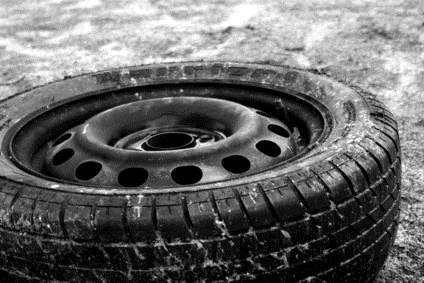
Tires play one of the most important roles in our vehicles. Studies have shown that maintaining proper tire pressure helps "avoid tire failure, such as tread separation or blowout and flat tires," according to the National Highway Traffic Safety Administration. While many owners are aware of the importance of a tire's air pressure, they fail to take into account the inflation of a tire during cold weather. Proper inflation during cold weather will ensure the best gas mileage, performance and safety of your vehicle and its passengers.
Tire air pressure should be checked more frequently during cooler months. Tires will always lose pressure in cold weather. How much depends on the outside temperature. Expect about a 1 pound per square inch (psi) pressure drop for every drop in temperature of 8 to 12 degrees Fahrenheit. Check tires when they are "cold." This means before you have driven on them.
Even in cold weather, tires should be inflated to the recommended pressure stated in your car's owner manual or door jamb plaque. Do not use the psi ratings on the tire.
Tires should not be over-inflated in anticipation of cold weather. If you are driving from warmer to colder weather, inflate tires only after you have checked your tires' pressure. Driving causes friction, which causes heat, which will increase your tire's pressure. Adding more air in anticipation of cold weather may cause a blowout or poor vehicle performance.
Valve stems and caps should be inspected more frequently during the winter months. Cold temperatures will contract the rubber, causing cracks and possible leaks.